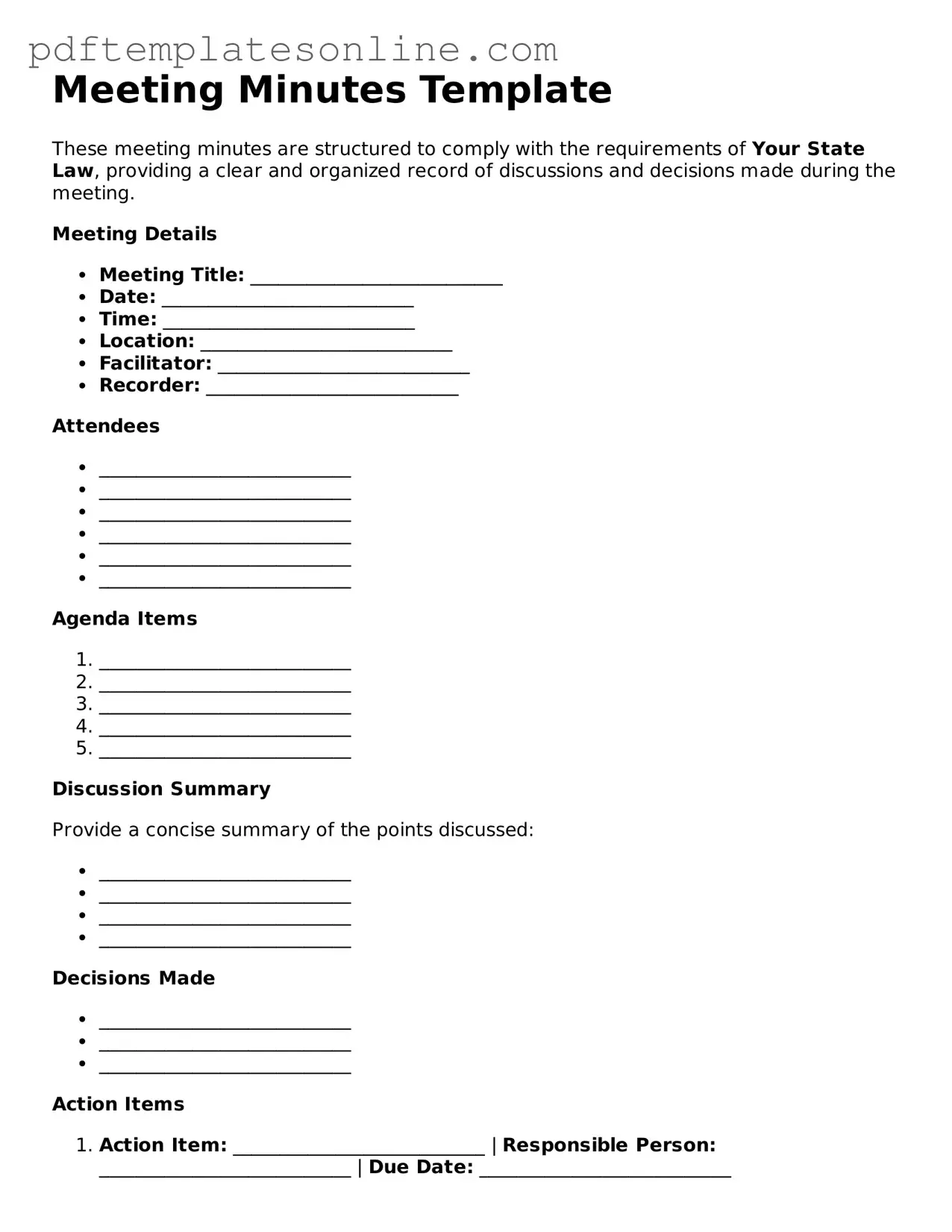Meeting minutes are essential for documenting the proceedings of a meeting, but many individuals make common mistakes when filling out the Meeting Minutes form. One frequent error is failing to include the date and time of the meeting. Without this information, it becomes difficult to track when discussions occurred, which can lead to confusion later on.
Another mistake is not listing the attendees properly. It’s important to note who was present and who was absent. This not only provides a record of participation but also helps in following up with individuals who may need to contribute to future discussions.
Some people neglect to capture key decisions and action items. Meeting minutes should summarize the main points discussed, including any resolutions made. Omitting these details can result in misunderstandings about what was agreed upon and who is responsible for what tasks.
Additionally, using vague language can hinder the clarity of the minutes. It's crucial to be specific and precise. Instead of writing, “The group discussed the budget,” it’s better to specify what aspects of the budget were discussed and any conclusions reached.
Formatting issues can also detract from the effectiveness of the minutes. A disorganized layout makes it hard for readers to follow along. Using bullet points for action items and clear headings for different sections can improve readability significantly.
Another common oversight is failing to distribute the minutes promptly after the meeting. Delaying distribution can lead to forgotten details and missed deadlines. Aim to circulate the minutes within a few days to ensure that everyone remembers what was discussed.
Lastly, some individuals forget to review the minutes for accuracy before finalizing them. Errors in the minutes can lead to miscommunication and confusion. It’s advisable to have someone else review the document to catch any mistakes before it is sent out.
